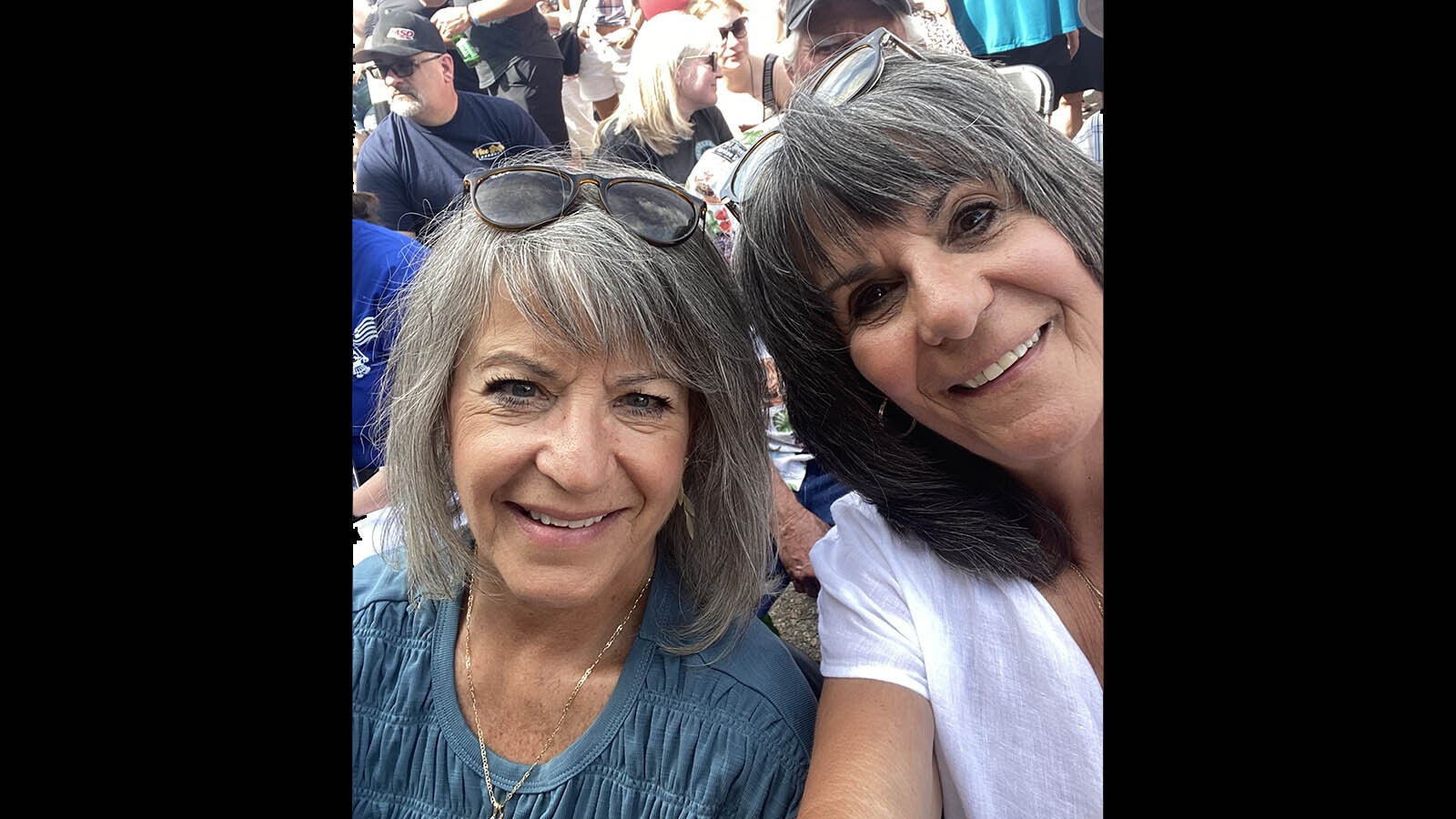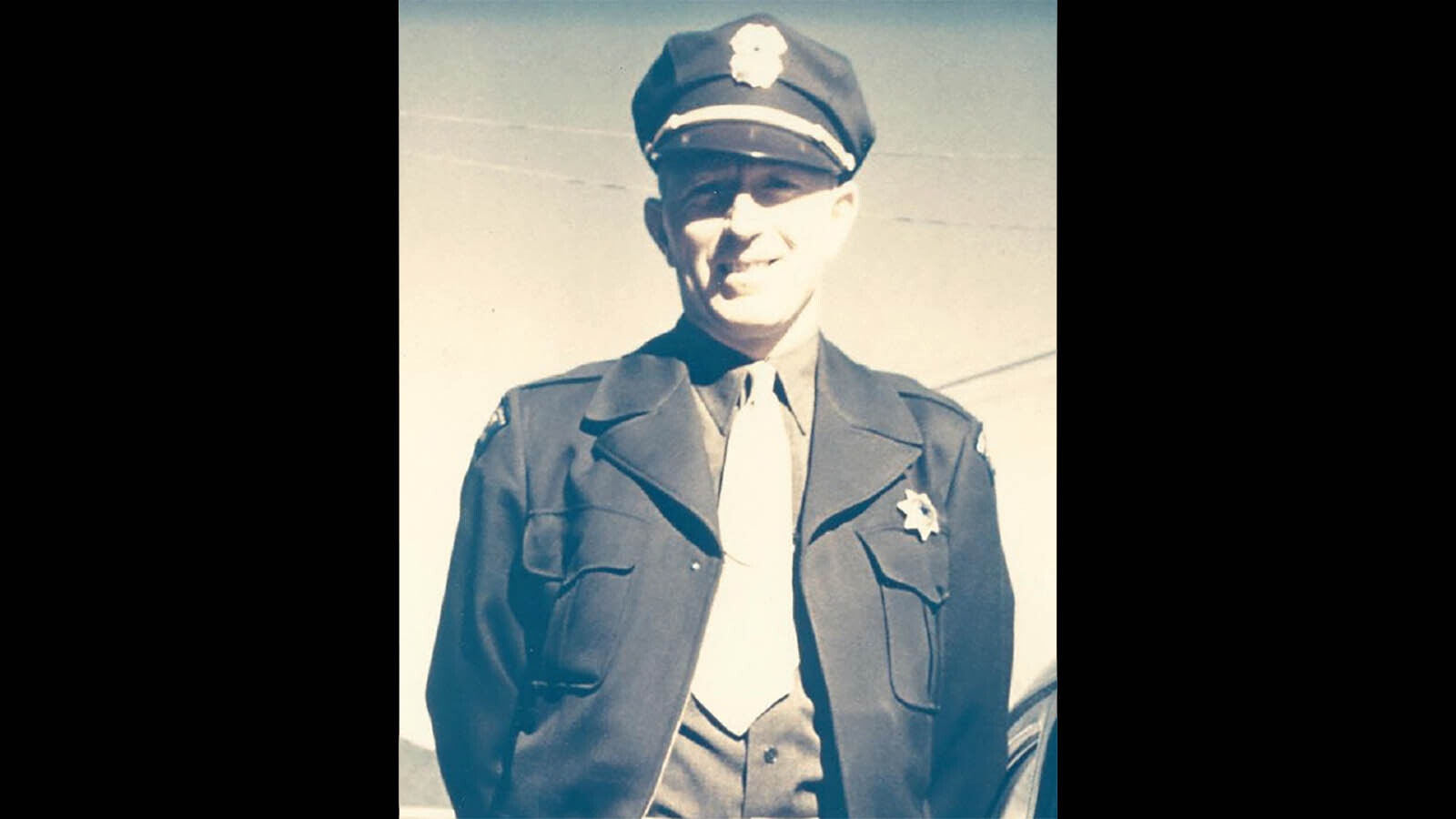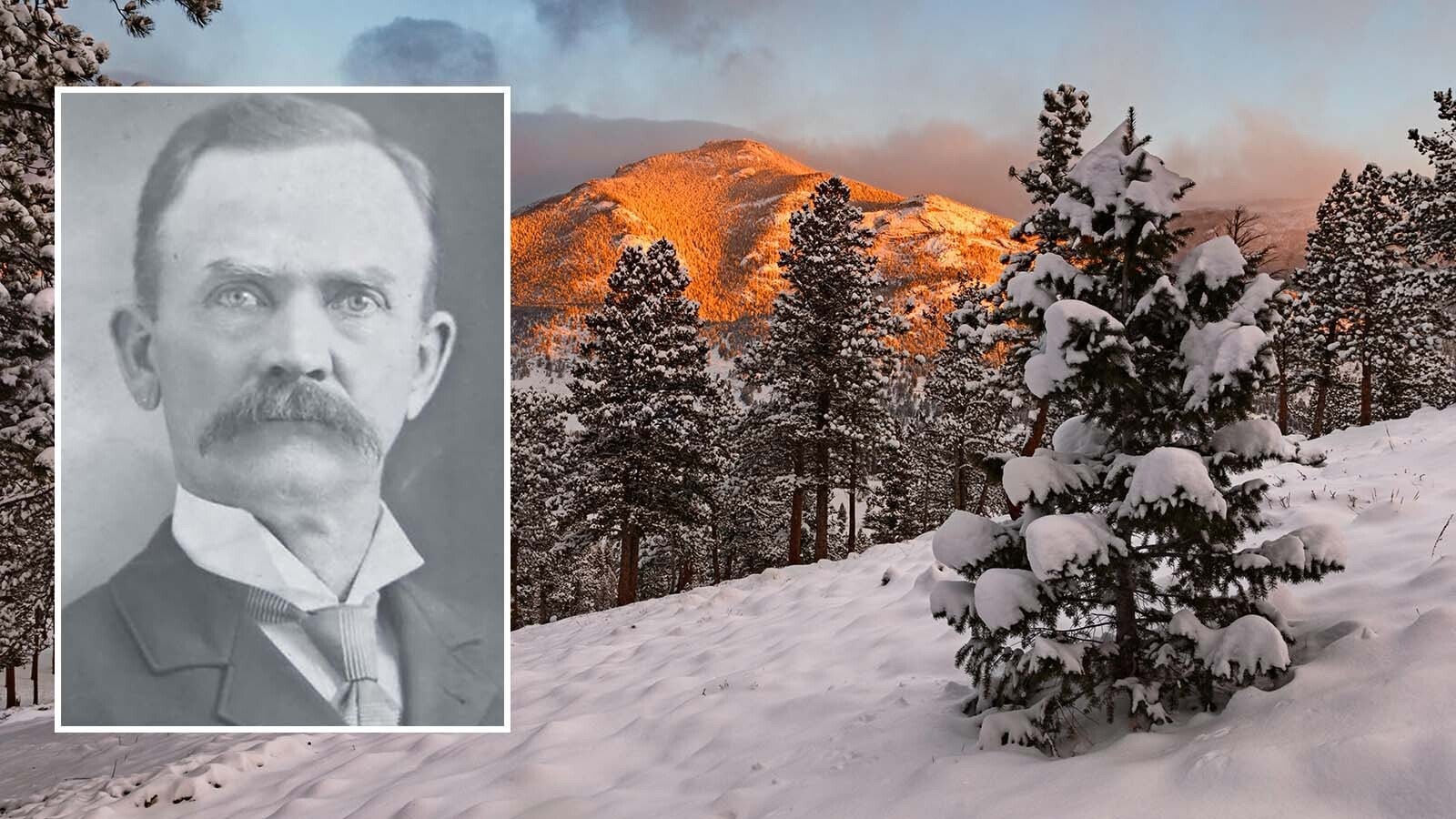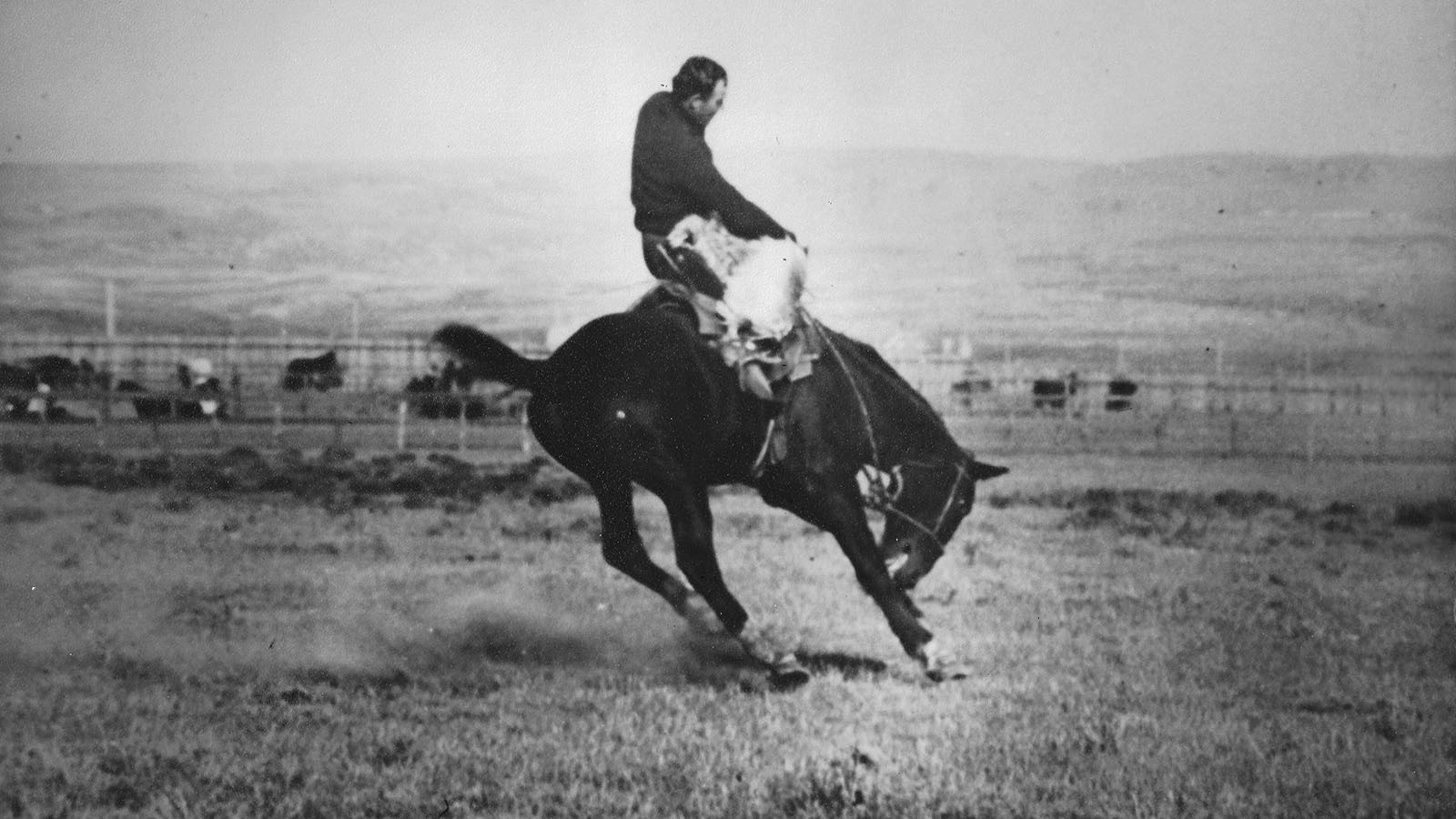A 24-year-old man living a lie in Pinedale, Wyoming, was masquerading under the name of a friend he met working in Basin in 1955 when his life came to a violent end after a murderous crime spree.
But for three years prior, his ruse succeeded so well that the Pinedale rancher he worked for allowed him to get engaged to his 16-year-old daughter.
Whether Charles Earnest Billings — aka Melvin H. Gray — was a Dr. Jekyll-and-Mr. Hyde type or had just soured on a life of pretense is unclear.
What is clear is that March 4, 1955, he armed himself with two weapons and went on a violent criminal rampage that left two people dead, two hurt and two families dealing with the trauma of kidnap and hostage scenarios.
Pinedale rancher Dean Binning was shocked as he was called to Sweetwater County by law enforcement to identify the body of the young man who worked for him and was engaged to his daughter, Joella.
He knew the man as Melvin Henry Gray.
“He was a fine boy,” he said, as quoted in the Casper Tribune-Herald.
But his character was not fine the day he died as a gunman running from police inside a Green River home where he tried to hold hostage a mother, her infant twin daughters and a sister-in-law.
Rula Bullock was one of those 21-month-old twins living in a home near the Union Pacific railyard with her parents, Gus and Mary Kalivas, and twin sister Effie.
She now lives in Vernal, Utah. Bullock said she and her sister, Effie Manley who still lives in Green River, were too young and the time to have any recollection of that terrible day, but it definitely had an impact on the family.
Especially their mom.
“We just know what was told to us growing up,” she said.
Working Friendship
Billings was born in Cody on Sept. 4, 1931, and had grown up in the area.
Reports says that he had served in the Marine Corps, but that could not be independently confirmed. A photo shows him wearing a military uniform cap.
A census record on May 18, 1950, had him working at the Snack & Cue in Cody. His mother, Ida P. Billings, was listed as the head of the household and a native of Missouri.
In 1952, Billings and the real Melvin H. Gray had worked together.
Gray, who spent a year in prison in Wyoming on a forgery charge, told The Portsmouth Star newspaper in Virginia in its March 10, 1955, edition that he and Billings had been best friends at one time. They met while driving for Pacific Intermountain Express Trucking Corp. in 1952.
After working in Basin, Wyoming, for six months, Gray said they drove to Cody for the Fourth of July, where Billings got into a fight with his brother-in-law.
They left and drove to Casper. Gray continued on to Denver, planning to return to Basin, but never did. He left a suitcase of his clothes and other personal items with Billings.
“That was the last time I ever saw him,” Gray told the paper. “He was mean and wild, but we got along all right together. He might have been a little crazy even then.
“He had done a few things that were wrong when I knew him, but nothing like killing anyone.”
Following Billings’ terror spree, his mother told authorities that he had taken Gray’s name because in 1953, Charles Billings was driving a car that belonged to an auto firm and was involved in an accident.
He took Gray’s name to avoid a lawsuit.
Her son was unaware that Gray had prison record, she told The Associated Press in a story printed in the March 8, 1955, Casper Daily Tribune.
Early on the morning of March 4, Billings wore a belt buckle with Gray’s initials on it, and the automobile he drove through the the snow-covered roads to Kemmerer was registered in Gray’s name. He apparently went to Kemmerer to see what opportunities were there to steal from a business and targeted an auto dealership.
Burglary Discovered
Shortly thereafter, Kemmerer Town Marshal Frank Kulinski discovered signs of a burglary at the dealership.
Meanwhile, Kemmerer gas station owner Don Wagner had been notified that there were vehicles that needed to be worked on and had gone to the station. It was in the middle of the night, at 2 a.m.
Kulinski stopped at the station and asked Wagner to notify Albert Maffei of a burglary attempt at his business.
Once Maffei arrived, the trio traced tracks in the snow that indicated attempts to break into the business, and the footprints led to car tracks.
They followed the tracks into Frontier north of Kemmerer, found the car and then were surprised by Billings as he came around a building with a weapon leveled on them.
Billings forced the three of them at gunpoint into his car and ordered them to drive north on U.S. Highway 189, according to newspaper accounts.
Once north of Frontier, the trio pleaded to be let out of the vehicle.
The gunman, sitting next to Kulinski in the back seat with Wagner driving and Maffei beside him, had them stop 3 miles outside Frontier and get out.
Kulinski told a reporter from his hospital bed that he and Wagner were at the front of the car with Billings, and Maffei was at the rear. Without warning, Billings shot Kulinski in the abdomen and he fell to the ground.
Billings then shot at Wagner’s head and grazed his face.
Simultaneously, Maffei at the rear of the car started running down the highway. Billings ran after him and shot him in the back several times. He also shot him in the face once he was down, the Rock Springs Miner reported March 6, 1955 .
Billings then returned to the car to look for Wagner, but he had run off the side of the highway and hid in underbrush and snow. Billings fired several shots around him as he crept in sagebrush, Wagner said.
“Wagner described the gunman as terribly afraid of something,” the Casper Daily Tribune reported. He was able to walk and find assistance.
Kulinski, badly wounded, also somehow managed to get up and walk into Frontier for help. Maffei’s body was recovered full of bullet holes in his back and gunshot to the head.

Kidnapping
Alerted police saw Billings’ car near the Kemmerer-Evanston junction of U.S. 30 and 189 and chased him over snow-covered roads into Evanston.
The police slid past a service station where Billings had pulled into, then jumped out of the car and ran into a field in the morning darkness. The officers began hunting for him and spotted him leave the station in a 1939 Ford with its lights out.
Inside the station, Billings wasted no time kidnapping Robert Durrant, 17, who was president of the Evanston Con Rodders, a hot rod club promoting safety on the highways. He had taken the job at the station shortly after Christmas because he liked cars.
“The first I saw of him was when he entered the station,” Durrant told a United Press reporter pushed in the Casper Morning Star on March 5. “He waved a gun in my face and asked me where our money was. I took him over to the cash register and just pulled the handle and let him at it. He scooped up all of the bills.”
Billings then ordered Durrant to get into Durrant’s 1939 hot rod and they drove east to Little America for gas, then to Linwood, Utah, now a ghost town, where Billings purchased new clothes and threw his old ones out along Highway 41 outside Linwood.
He kept the belt and buckle with the initials “MHG” from Gray. The pair then went into the Uinta mountains where they got stuck. They walked into a logging camp and convinced loggers to help push them out, Durrant later told authorities.
Billings then ordered Durrant to Green River and got out of the car across the tracks from the depot. He told Durrant to go west. At 5:30 p.m. after Durrant drove into Little America 22 miles west of Green River, he reported that Gray had left his car at Green River.
Sweetwater County Sheriff George Nimmo who had been looking for the pair happened to be coming into Little America at the same time.
He took Durrant in his patrol car back to Green River and alerted officers — telling them that Durrant said Billings had walked into Green River via an overpass.
The Hunt
Officers searched the Union Pacific rail area where Sweetwater County Sheriff’s Office Deputy Ed Phillips saw Billings on a platform and yelled for him to stop.
Billings ran behind a box car and Phillips went after him and was shot under his arm. Billings then ran into a nearby home where Mary Kalivas lived with her husband, Gus, and their twin daughters.
Bullock said her mother had arrived in the country from Greece at 24 years old and spoke little English, though by 1955 she had been in the country for five years.
Her father was out of town working when the killer invaded their home.
“My mom was screaming out of the house and my aunt Georgia — I have two Aunt Georgias — my Aunt Georgia Barbarigos was in the house with us and my mother went screaming out of the house,” she said. “My Aunt Georgia next door thought because we were twins, something happened to us in the bathtub that maybe we had drowned or something.
“And she came running out of the house (and into their house), but the killer shot at her and missed her, and thank God he did because the police department was right next door going through the houses.”
She said the police knew Billings was in the area, and the shot at the aunt from next door is “what made them realize he was at my mom’s house.”
Additionally, Manley said she understood that the killer had a gun to her mother’s head and his arm around her neck at one point “screaming at her to help him” before she went screaming out of the house.
With her limited grasp of the language, she would not have understood anything Billings said.
Newspaper accounts report Billings forced their Aunt Georgia Barbarigos to sit in a chair with the two girls. Manley said her understanding is that her aunt “grabbed us and put us on her lap.”
Union Pacific Railroad special agents Gaylord Sherman and Edward Trittenham, along with Wyoming Highway Patrol Troopers Art Reese and John Hampton, responded to the shooting and escape into the neighborhood. They arrived outside the house.
“When that posse got there, my mom kept screaming in Greek, ‘My babies are in there,’” Manley said.
Sherman and Reese stepped on the front porch and Billings told them to get back or he would kill the girls, according to news accounts.

Billings’ End
The other officers went to the side of the house and broke out a window, saw Billings and fired, hitting him in a leg.
When they fired, Sherman poked a 12-gauge shotgun through a front-door window and fired sending the killer into a back bedroom onto the bed.
The officers called for Billings to come out. The Rock Springs Miner reported that Billings replied: “I’m dead, dammit, come and get me.”
The Casper Daily Tribune published a photo of Billings, who at the time they thought to be Gray, laying on the bed in the home. His eyes were open.
Meanwhile, as Durrant and Billings spent March 4 covering territory in Utah, Durant’s parents hired a private plane to search the Evanston area for their son.
“Thank God, he’s safe,” Minnie Durrant said in an article published March 5 in the Casper Morning Star. “My son said he wasn’t hurt.”
Durrant said he was surprised to learn that his captor had killed people.
“He was a real nice guy. I can’t imagine him shooting anybody,” he told The Associated Press.
Phillips underwent surgery for his gunshot wound and died at the hospital.
Sweetwater County Sheriff George Nimmo had fingerprints taken of the gunman’s body and found they did not match that of former Wyoming convict Melvin Gray, who authorities thought they were dealing with because of the abandoned car in Evanston.
An investigation followed that revealed Billings’ identity.
Trauma Remained
Bullock said the incident traumatized her mother for the rest of her life. Her family continued to live in the house where the gunman was shot.
Her mother lived there until she died at age 91.
“My mom was a very private person and so she spoke about it, but it always frightened her,” Bullock said. “From that day on she kept the doors locked. Even if you walked out the door to go to the garbage can, she would lock the door behind you. And I don’t blame her. It was a frightening experience.”
Bullock said she was told that Billings did not die on the bed but in an ambulance a couple of blocks away from the home. Her sister believes that story was made up for the benefit of their mother
“In the pictures that I have seen, he looks pretty dead on her bed,” she said. “They tried to convince her that he didn’t die there, that was the big thing for her.”
Manley added that her mother “did not talk” at all for two months afterward and that the family went to stay in the home of her sister for a while.
“She went completely mute, she was in shock. I think she had PTSD,” Manley said.
When the twins were older, their parents revealed to them that their family’s story had been written up in True Detective Magazine and two other detective-type magazines that focused on bizarre crimes.
Bullock said she thinks her dad, who talked about the incident, felt bad about not being home when the killer arrived. The twins share the story from time to time with others.
“I’ve told a lot of people. My sister has, too,” she said. “It’s pretty bizarre. We were almost 2, our birthday is in June.”
Bullock said she was invited to a reunion that involved a remembrance of slain Sweetwater Deputy Ed Phillips about 10 years ago in Green River but was not able to attend.
Manley said she did attend the event. The Sweetwater Sheriff’s Office website lists Phillips as the only deputy in its history killed in the line of duty.
Durrant enlisted in the Wyoming National Guard, had a family and career as a master plumber, served on the Evanston Fire Department for several years and retired to Meridian, Idaho. He died in 2016 donated his body to medical science.
The 16-year-old rancher’s daughter, Joella Binning, went on to marry, have children, succeed in a career with the U.S. Forest Service career and worked the family’s ranch. She died in 2021.
Both Phillips and Maffei left families with small children.
Both twins went on to marry, have families and live normal lives.
Manley said the memories from her childhood in the same Green River neighborhood that experienced terror on that March day are like a Norman Rockwell painting. She said they had ice skating in the winter and played until dark in the summer.
Though she does not recall the events of March 4, she said whenever she hears a gun fired it “bothers” her. Manley said she does not know if that is an unconscious response to what happened as she was in that living room long ago.
She remains grateful for the actions of the officers who arrived to save her family from Billings.
“We could have been killed,” she said.
Dale Killingbeck can be reached at dale@cowboystatedaily.com.











